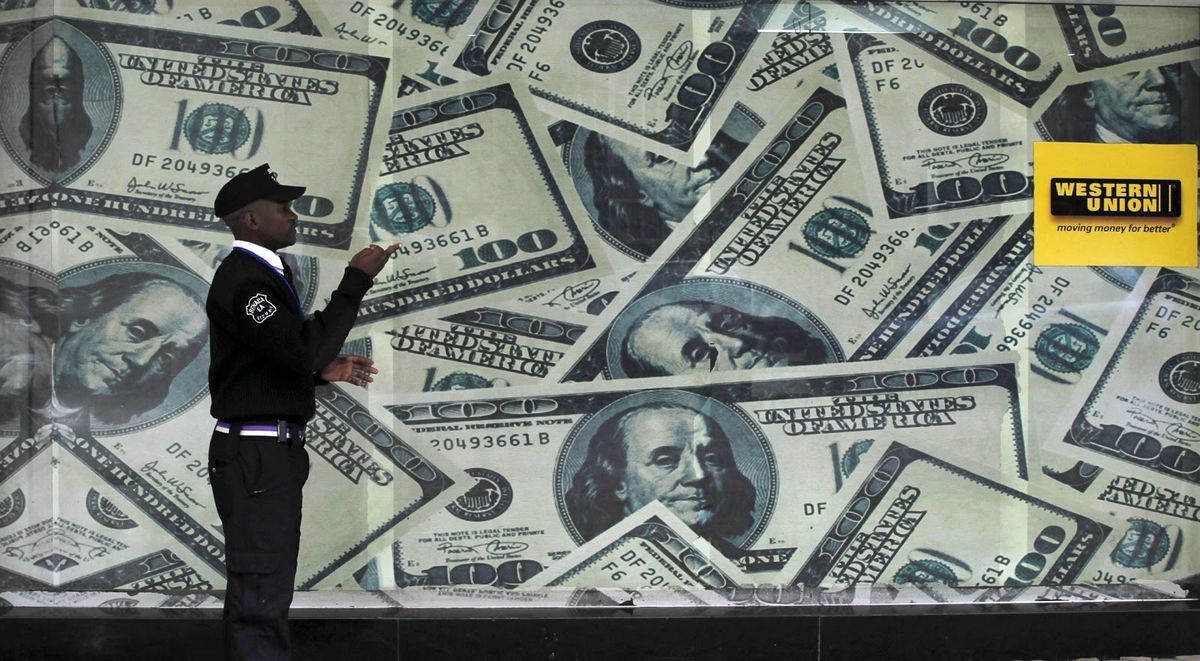Why has the cost of everyday products gone up and are these high prices here to stay?

A few minutes every morning is all you need.
Stay up to date on the world's Headlines and Human Stories. It's fun, it's factual, it's fluff-free.
The US Bureau of Labor Statistics found that prices paid by Americans for products and services in May of this year was up 5%. That’s the largest yearly percentage increase since the 2008 recession.
- Everything from used cars and computers to lumber and gasoline has seen steep price increases since the beginning of 2020.
- The economy is slowly recovering after shutdowns, labor shortages and other complications due to the COVID-19 pandemic.
- The volatility in the market is reflected in changes in the prices of certain everyday products. The price of toilet paper, hand sanitizer and cleaning supplies, for example, skyrocketed because they were in such high demand. But during the same period, the price of items that weren’t highly demanded went down.
- For example, in March 2020, the national average for gasoline went down to US$1.99. No one had anywhere to go, so no one was buying gas to fill their cars.
- The United States Bureau of Labor Statistics found that prices paid by Americans for products and services in May of this year was up 5%. That’s the largest yearly percentage increase since the 2008 recession.
What is causing the increase in prices?
- Prices are rising for several reasons, mostly due to complications following the pandemic.
- Shortages in semiconductor chips used to build new cars and video cards for new computers has meant that the demand has increased while the supply has fallen.
- But that doesn’t tell the whole story. In an extreme case, the US saw a more than 400% rise in the cost of lumber in 2020. Because so many people were home due to lockdowns, they had more time to work on their homes. On top of that, labor mills suffered a labor shortage because many of their workers had to stay home.
- The Chairman of the Federal Reserve, Jerome Powell, used lumber as an example for his belief that the inflation currently taking place won’t last.
- “The thought is that prices like that, that have moved up really quickly because of shortages and bottlenecks and the like, they should stop going up. And at some point, they, in some cases, should actually go down,” Powell said after lumber prices fell 43% in May.
Political implications
- Republicans have seized on higher gas prices to point a finger at the Biden administration.
- “Average gas price: June 2020: $2.21 June 2021: $3.07,” tweeted Republican Representative Jim Jordan, who added, “President Biden’s economy!”
- But the Biden team quickly responded with White House press secretary Jen Psaki tweeting back, “You forgot to mention that gas prices are the same now as they were in June 2018. Or that this time last year unemployment was 11.1% — today it’s 5.8%.”
- Republicans are largely united in their effort to use the inflation seen today to attack Democrats’ economic policies.
- In May, Republican Representative Jim Banks sent out a memo, which was later released by Axios, to the Republican Study Committee members urging them to “explain to voters how inflation is Democrats’ hidden tax on the Middle Class.”
How does inflation affect the average person’s wallet?
- Besides the obvious, that is, things are more expensive, inflation can affect a number of things for regular consumers.
- For one, the Fed plays a big role in controlling inflation and determining how the economy responds. It acts as the country’s central bank and pumps money into banks when the economy is slow. But now that prices are starting to get too high, Powell plans to raise interest rates on the money banks borrow from the Fed.
- Raising or lowering these rates have a ripple effect in the economy. If the Fed gives banks less money, banks will be at a higher risk when they loan money to consumers. To adjust, the banks put higher interest rates on business loans, mortgages and credit cards.
- After Powell’s announcement on June 16 that rates would be increased, the Dow Jones fell 260 points. But much as the price of lumber eventually evened out, the stock market rallied to gain 1.5% on June 21.
How do you avoid inflation’s effect on your wallet?
- The price of food at restaurants has risen 4% since May 2020, hitting a 13-year inflation peak, while the price of groceries has risen by a comparatively small 1.2% since April 2020.
- Cooking at home has always saved money, but this year it’s saved more than most.
- Traveling is a more complicated situation. Airfare bookings are already above 2019 levels and airlines aren’t adding more flights.
- Gas prices are also hitting highs, though the Energy Information Administration (EIA) reported an increased supply of gasoline on June 21, which should bring prices down again.
- The best thing to do if you notice something is pricier than usual is to be patient.
- “Prices that have moved up really quickly because of the shortages and bottlenecks and the like,” Powell said. “They should stop going up. And at some point, they in some cases should actually go down.”
Have a tip or story? Get in touch with our reporters at tips@themilsource.com




Comments ()